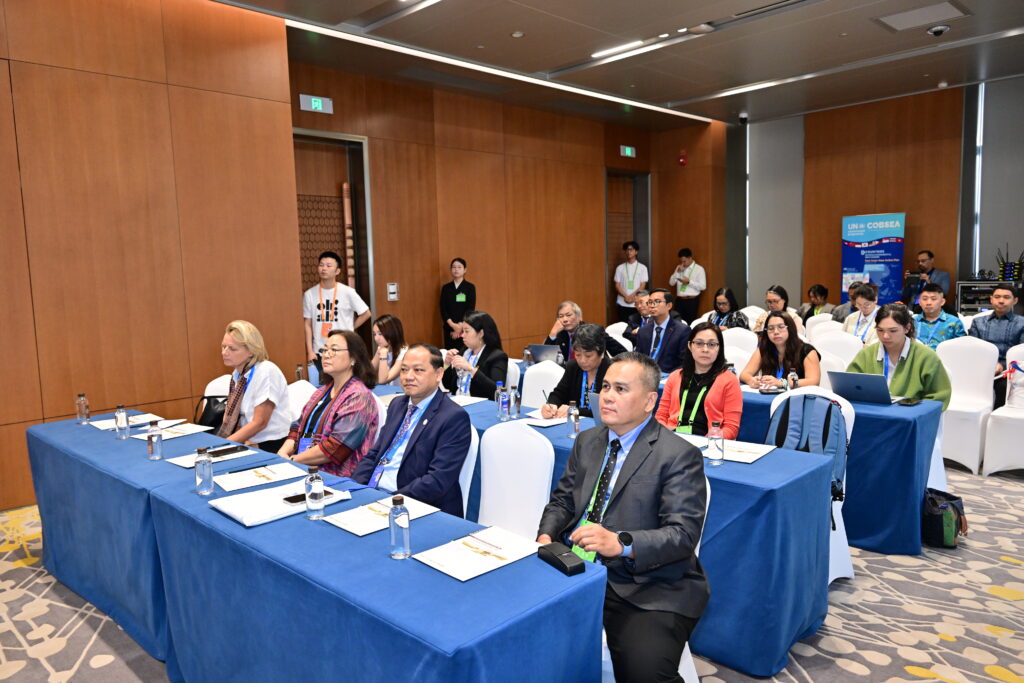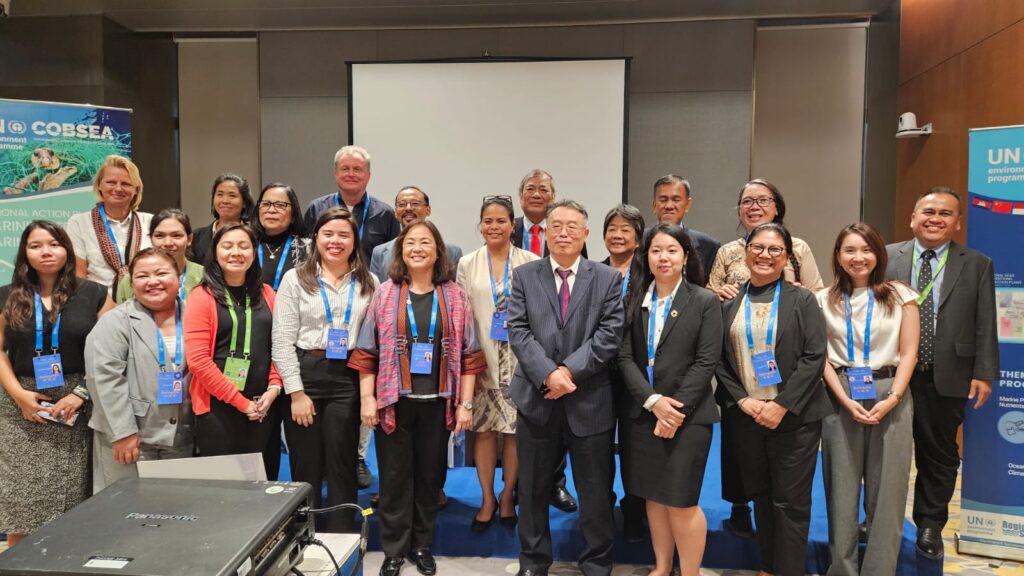
Attentive participants at the ‘Three Planetary Crises’ session, held on 7 November at the EAS Congress 2024. (PRF)
The triple planetary crisis (TPC) – encompassing climate change, biodiversity loss and pollution exacts a heavy toll on the environmental, economic and social levels.
“The triple planetary crisis is not really new, but what’s truly alarming is the accelerating speed and growing intensity of these issues,” said EAS Partnership Council Chair Dr. Vann Monyneath during the second day of the EAS Congress in Xiamen.
These interconnected challenges form a complicated web that demands integrated and immediate action. While many organizations are actively involved in marine and coastal management, their efforts often remain isolated, limiting their overall impact. It is essential to develop a comprehensive understanding of the synergies and trade-offs involved in addressing these environmental issues. Therefore, a collaborative, whole-of-society approach involving the different regional mechanism or organizations in the region is vital to forge sustainable solutions and build a resilient future for East Asian Seas. This collaborative approach was proposed by the Coordinating Body on the Seas of East Asia (COBSEA), in collaboration with the GEF South China Seas Strategic Action Programme project (SCS SAP) through this joint session on the Triple Planetary Crises during EASC2024.
“We have the triple planetary crisis, but one of the issues we need to face is the issue of equality, equity and benefit sharing. The social dimension of how to level the playing field and make sure that everyone is getting a little piece of the pie rather than a few getting a lot of the pie,” adds IUCN Senior Program Officer Maeve Nightingale. In addition to addressing the TPC, it is imperative to incorporate the social dimensions of equality and equity to ensure that no one is overlooked in our efforts.
Recognizing that various regional initiatives operate within the same government agencies and engage with similar focal points can result in inefficiencies. Establishing a network of National Partners in the future could streamline coordination efforts across countries and enhance collaboration on joint actions.
The collaboration of various regional organizations can begin by leveraging existing regional action plans as valuable references. This approach will help identify collaborative initiatives, allowing stakeholders to tackle key challenges in a more strategic and synergistic manner.
The session came up with several key recommendations. Some immediate and easily-achievable collaborative actions that can be initiated by various regional mechanisms and initiatives in the East Asian Seas (EAS) region include the following:
- Establish a Shared Knowledge Platform: Create a central platform for sharing best practices and key knowledge products, allowing stakeholders to easily access and exchange valuable information.
- Enhance Communication of Success Stories: Effectively communicate and package stories, experiences, best practices and results in a way that resonates with local stakeholders.
- Utilize/Enhance Existing Tools: Avoid redundant efforts by coordinating the use of existing tools, such as Marine Spatial Planning (MSP) and Integrated Coastal Management (ICM) manuals to enhance collaboration and resource sharing.
- Map Regional Initiatives: Identify overlapping and complementary initiatives by mapping the mandates and focus areas of different regional initiatives, including a map as visual reference of various Marine Protected Area (MPA) networks in the EAS for example.
- Increase Joint Capacity Building: Foster increased opportunities for joint capacity-building initiatives and knowledge exchanges among stakeholders.
- Elevate the EAS Profile Globally: Boost the visibility of the East Asian Seas on a global level, especially at the Our Ocean Conference in the Republic of Korea (April 2025) and the third UN Ocean Conference in France (June 2025), by convening a regional session that showcases the impactful work being done in the EAS region.
The understanding of the deeply interconnected effects of the TPC aligns with Action 1 of the Xiamen Ministerial Declaration in promoting vertical, horizontal and spatial integration to support effective ocean governance and strengthen policy coherence across sectors with full recognition of the land-sea interface and the interconnectivity of ecosystems.
“If we are to truly support the countries of the region and set a roadmap for regional collaborative action, then it is important for various regional organizations to go beyond their mandates and look at the work being done as a service for the region,” said PEMSEA Executive Director Aimee Gonzales.
In the concluding session, Mahesh Pradhan, COBSEA Coordinator and Anders Poulsen, SCS SAP Senior Project Manager reiterated the usefulness of this joint session as a first step towards elevating common efforts in addressing the triple planetary crises in the East Asian Seas context to the global level.

All smiles after the ‘Three Planetary Crises’ session, held on 7 November at the EAS Congress 2024. (PRF)
